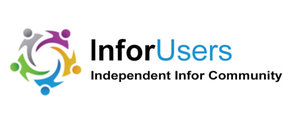Poor EHR Implementations Drive Provider Frustrations
A recent article in Forbes suggests the EHR is dead. At this time, approximately 90% of hospitals and clinics have EHRs installed to support patient care. The quick adoption of EHRs by providers to receive ACA money for implementing these solutions resulted in negative impacts to the providers.
Very few provider organizations took the time to design or redesign EHR clinical workflows or to implement clinical personalization tools to drive improved care delivery processes. Change management was not effectively implemented to drive higher levels of provider adoption. To resolve these EHR challenges, providers are expending significant capital to identify EHR tools and training that can make the EHR more effective in supporting patient care, and that is increasing the cost of an already expensive environment. Additionally, as more and more quality reporting requirements are added to the EHR, it is identified as more of a billing system than a system to support clinical care delivery.
Efforts to improve the use of current EHR solutions still fall short in providing the environments that will benefit both clinicians and patients. Workflows are still relatively rigid, and technologies such as voice recognition that can support EHR application navigation (as well as generate clinical documentation capture and codification) are slow on the uptake for provider use. More importantly, the ability to capture and share patient data between providers to improve care quality and patient safety has been inhibited by EHR silos.
EHRs Need to Become Federated HIE-as-a-Service Platforms
The second part of the Forbes article on EHRs and the current market identifies the financial challenges that EHRs present. High cost, high maintenance, and technologically stagnant solutions are often anchored in provider environments due to the high costs paid for these environments. The pandemic demonstrated the power of digital technologies to improve application design and performance. This has not been lost on the large enterprise EHR vendors as both Epic and Cerner have digital application libraries of tested and approved digital solutions that can be used with their EHRs. Emerging virtual scribe applications improve physician documentation efficiencies while codifying clinical data for use in billing, quality reporting, clinical analytics, and emerging AI solutions.
As digital applications continue to advance, EHRs will likely be challenged to match the digital application capabilities in their legacy architectures. This provides the opportunity for EHR vendors to reposition the EHRs as federated HIE-as-a-service platforms that focus on gathering, normalizing, analyzing, and sharing data between providers, between payers, and with patients.
If better clinical applications can be provided by emerging digital applications than exist with the EHR, the EHR can provide APIs to deliver the needed data interoperability. The EHR can provide the data analytics, reporting, and clinical decision support solutions that are needed to support a higher quality and lower cost of care for value-based care reimbursement. This type of EHR transition should result in lower EHR total cost of ownership while improving both clinician and patient satisfaction over the next decade.
The Justification: EHRs are Costly to Rip and Replace
Provider organizations in the US have spent hundreds of millions or billions of dollars to implement enterprise EHRs needed to support their operations. While EHRs provide data to support patient encounters of care, they may not support treating patients in episodes of care that transcend several modalities of care. Much of the EHR replacement market is based on implementing an EHR that can support patient care across modalities of care within the provider networks. But sharing patient data outside of provider networks remains a challenge that has be to overcome. Transitioning EHRs to function as federated HIEs that can share data with all providers and emerging large technology data lakes will generate low costs and high-quality care outcomes for all socioeconomic patient populations.
The Players: Emerging Digital Applications Focused on Healthcare Processes
Representative digital healthcare solution categories and vendors are the following:
- Social Determinants of Health – Aunt Bertha, NowPow, Healthify, and Unite Us
- Virtual Digital Scribe Applications – Suki and Augmedix
- Telehealth/Telemedicine – Bright.md, Caregility, Pexip, and SOC Telemed
- Interoperability Platforms – Infor FHIR, Redox, Secure Exchange Solutions, Smile CDR, and ViTel Net
- Patient Engagement – DocASAP, PatientPing, Force Therapeutics, GetWellNetwork, GYANT, Intrado HouseCalls Pro, Quil, and Radix Health
- Remote Patient Monitoring – CareSimple
Success Factors
- Identify digital healthcare applications that solve a patient care need and prototype the solution in the provider innovation center.
- Develop a FHIR API to integrate the data flows of the selected digital health applications with the EHR.
- Identify digital health application data and metrics that can be used to validate cost, clinical efficiency, and satisfaction for both clinicians and patients.
Summary
EHRs delivered patient medical records that mimicked the paper medical records, and that was an initial design flaw that prevented these solutions from advancing to quickly address provider care delivery needs. Inflexible EHR legacy applications and data workflows resulted in unmet needs for physicians and other clinicians to efficiently use patient care applications to document, manage, and share data that supported patient care. The pandemic unleashed a barrage of process-focused digital applications that focus on improving clinician efficiency and satisfaction for delivering patient care if they can be effectively integrated with EHR workflows and data streams. EHR vendors that resist provider efforts for digital application interoperability to support patient care will likely see their market positions erode over the next decade.
More importantly, EHR vendors with products that begin to function as federated HIE-as-a-service platforms that can share patient care data with other providers, payers, and patients have a high probability of surviving and improving their market positions.
Failure of EHRs to move in this direction may result in their obsolescence by large cloud technology vendors.
Photo credit: Scanrail, Adobe Stock


